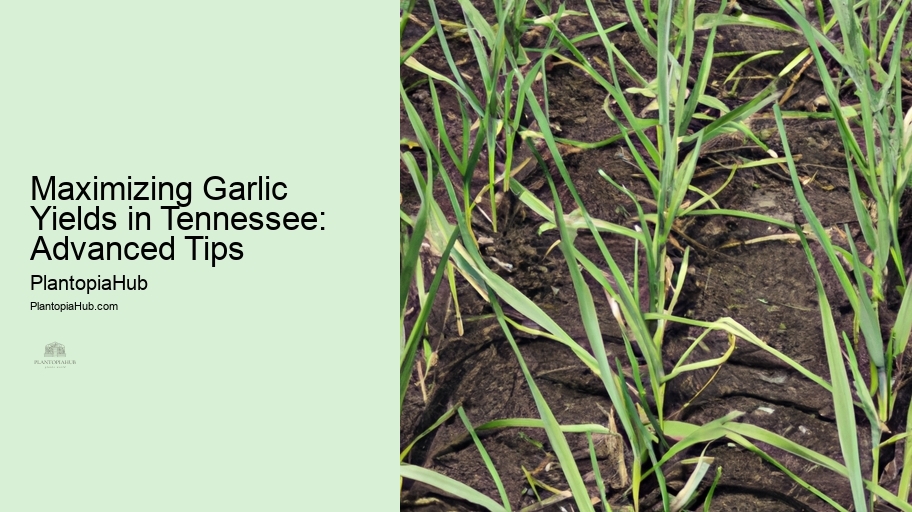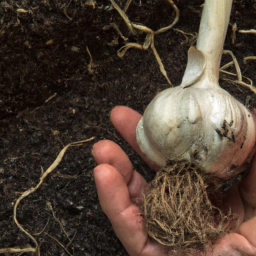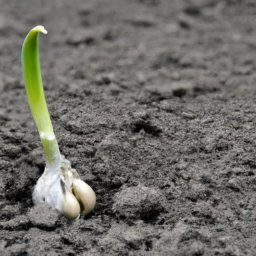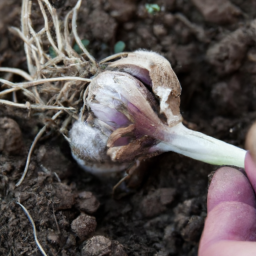

Garlic farming can be a catalyst for community building in Tennessee.
Building a supportive community can benefit both your garlic farm and the local agricultural ecosystem.
In conclusion, garlic farming can serve as a platform for community building, enriching the social fabric of Tennessee's agricultural landscape.
Staying updated on advancements in garlic harvesting machinery is essential for modern garlic farmers in Tennessee. Garlic Yield Optimization Explore innovations like mechanical harvesters and bulb cleaning equipment to streamline your operations and reduce labor costs.
Efficient machinery can improve the efficiency and profitability of your garlic farm.
In conclusion, embracing technological advancements in garlic harvesting machinery enhances the competitiveness and sustainability of Tennessee garlic farming.
Understanding the perfect timing for planting garlic in Tennessee is crucial for gardeners aiming to harvest plump, flavorful bulbs. The state's unique climate dictates that garlic planting should ideally occur in the fall, several weeks before the first frost. This timing allows garlic to establish roots while the soil is still warm, yet provides a dormant period over the winter that is essential for bulb development.
Selecting the right planting date is just the beginning. Gardeners must also consider the specific microclimate of their gardening space, as Tennessee encompasses a range of climatic conditions from the Appalachian Mountains to the Mississippi River plains. Local weather patterns and the specific location of your garden can influence the best planting time within this window.
For optimal results, aim to plant garlic in late September to October in Tennessee. Fertilization Techniques This period ensures that your garlic will benefit from cooler temperatures while avoiding the heat stress of summer. Paying attention to local frost dates and adjusting your planting schedule accordingly can lead to a successful garlic harvest the following summer, providing your kitchen with a staple ingredient grown right in your backyard.


When selecting garlic varieties for Tennessee, it's crucial to consider the local climate. The state's diverse weather conditions, from hot summers to cold winters, require adaptable garlic types. Varieties like "Music" and "Chesnok Red" thrive in Tennessee's climate. These robust cultivars exhibit excellent disease resistance and yield dependable harvests.
Furthermore, softneck varieties such as "Inchelium Red" and "Silver White" are suited for milder regions of Tennessee. They're known for their easy braiding, making them popular choices for market growers. Carefully assessing your local climate is the first step toward a successful garlic harvest in Tennessee.
In conclusion, adaptability is key when choosing garlic varieties for Tennessee. Consult with local agricultural experts or your county extension office for personalized recommendations based on your specific microclimate and goals.
Timing is everything when it comes to planting garlic in Tennessee. Typically, the best planting dates fall between late September and early November. Tennessee Climate Zones This timeframe allows garlic cloves to establish roots before winter and ensures robust growth in the spring.
However, specific planting dates may vary depending on your location within the state. In warmer areas, earlier planting in September is advisable, while cooler regions can benefit from a late October start.
To sum up, choosing the optimal planting dates for garlic in Tennessee is a crucial step in ensuring a successful harvest. Local climate and conditions should guide your decision to maximize your garlic crop's potential.


Garlic's success begins with the soil it's planted in. In Tennessee, preparing your soil correctly is essential for healthy garlic growth. Start by selecting a well-draining site with full sun exposure. Loamy, well-aerated soil is ideal for garlic cultivation.
Begin soil preparation in late summer or early fall.
In conclusion, soil preparation is a critical factor in successful garlic farming in Tennessee. Investing time and effort in this stage will pay off with healthy plants and bountiful harvests.
Proper garlic planting depth and spacing are key factors in achieving a successful harvest in Tennessee. When planting garlic, ensure that each clove is planted at a depth of 2-3 inches below the soil surface.
Adequate spacing is equally important. Space individual garlic cloves approximately 4-6 inches apart within rows, leaving 12-18 inches between rows. Agricultural Equipment for Garlic Farming This spacing allows for optimal air circulation, reduces the risk of disease, and ensures each bulb has enough room to grow.
In conclusion, paying attention to garlic planting depth and spacing in Tennessee soil is vital for a successful crop. Properly spaced and planted garlic cloves will result in healthy, vigorous plants and higher yields.

Creating a customized garlic planting calendar for your Tennessee location involves considering factors like frost dates, local climate variations, and the garlic varieties you plan to grow. Start by determining the average date of the first fall frost and work backward to establish planting dates. It's important to align your calendar with your specific microclimate and garlic variety requirements, ensuring the best timing for planting and harvesting.
Organic garlic farming in Tennessee offers several benefits. It promotes soil health, reduces chemical inputs, and produces garlic that meets high organic standards, appealing to health-conscious consumers. Organic practices also contribute to environmental sustainability by minimizing the impact on ecosystems. Furthermore, the demand for organic garlic continues to grow, making it a profitable venture for farmers who embrace these practices.
To protect your garlic crop from winter frost in Tennessee, consider applying a thick layer of mulch, such as straw or leaves, around your garlic plants in late fall. This mulch acts as insulation, preventing the soil from freezing and safeguarding the garlic bulbs. In extremely cold regions, you can also use row covers or cloches to provide additional frost protection. Be sure to maintain proper airflow to avoid condensation, which can lead to mold and rot.
The optimal time for planting garlic in Tennessee typically falls between late September and early November. It's important to consider your specific location within the state, as warmer regions may benefit from earlier planting in September, while cooler areas may choose a late October start. Monitoring local temperature trends and referring to the USDA hardiness zone map for Tennessee can help determine the best planting window.